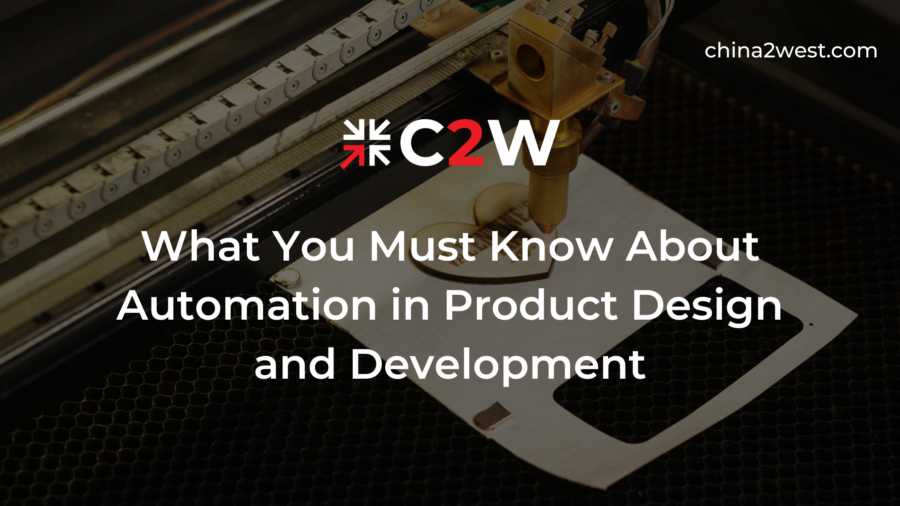In today’s fast-paced and technologically advanced world, automation has emerged as a game-changer across various industries, revolutionizing the way tasks are performed and businesses operate.
Among the numerous sectors benefiting from automation, one of the most significant is product design and development.
This article takes an in-depth look at the multifaceted role of automation in this realm, exploring its myriad benefits, the challenges it poses, and the exciting future it holds.
Understanding the Essence of Automation in Product Design and Development
At its core, automation encompasses the utilization of technology, algorithms, and software to carry out tasks with minimal human intervention.
In the context of product design and development, automation involves employing a spectrum of tools and techniques that streamline processes, amplify productivity, and elevate efficiency.
Whether it’s conceptualizing a new product, creating prototypes, conducting simulations, or even managing the supply chain, automation has redefined the landscape of innovation.
The Pervasive Benefits of Automation in Product Design and Development
Unparalleled Efficiency
The most conspicuous advantage of automation is the marked reduction in time spent on repetitive and time-consuming tasks.
This liberates designers and developers to invest their energy in more creative, intellectually stimulating activities that propel the design process forward.
Precision Redefined
Automation has ushered in an era of meticulous accuracy. By minimizing human errors, automated tools generate designs that are not only precise but also of impeccable quality.
This translates into products that meet the highest standards of functionality and aesthetics.
Economic Advantages
Although the initial investment in setting up automation infrastructure can be substantial, the subsequent returns are substantial.
The decrease in labor hours, faster time-to-market, and minimized operational costs collectively contribute to substantial savings in the long run.
Accelerated Prototyping
Automation expedites the prototyping phase, enabling designers to create, modify, and test prototypes in rapid succession.
This agility leads to more refined iterations, reducing the development lifecycle and ensuring a swifter product launch.
Data as the North Star
Automation generates a plethora of data throughout the design and development journey.
This data is a goldmine of insights, enabling data-driven decision-making, and offering a holistic understanding of consumer preferences, trends, and market demands.
Navigating the Challenges in Implementing Automation
Yet, alongside its remarkable benefits, the integration of automation into product design and development presents several challenges:
Intricacy of Implementation
Customizing automation systems to cater to the specific requirements of a product can be intricate and time-intensive. The design of automated workflows necessitates a meticulous approach to ensure seamless integration.
Initial Financial Outlay
While the advantages are undeniable, setting up automation infrastructure and training personnel can incur significant upfront expenses. This can pose a hurdle for small and medium-sized enterprises aiming to embrace automation.
Human Expertise
Although automation can undertake an array of tasks, it cannot replicate the human mind’s capacity for creativity, innovation, and adaptation. Human expertise remains indispensable for tasks that demand artistic flair, out-of-the-box thinking, and problem-solving skills.
Security and Privacy Concerns
Automation involves processing and storing vast quantities of sensitive data. Consequently, ensuring robust data security and safeguarding privacy emerge as major concerns that require constant vigilance.
The Unfolding Horizon of Automation: Trends Shaping the Future
The evolution of automation in product design and development promises to be dynamic, with several trends poised to shape its trajectory:
AI-Powered Design Intelligence
Artificial Intelligence (AI) stands at the forefront of reshaping product design. By analyzing consumer preferences and market trends, AI-powered systems offer invaluable suggestions for design enhancements, resulting in products that resonate deeply with customers.
Generative Design Renaissance
The emergence of generative design is a paradigm shift. Employing intricate algorithms, this approach generates a multitude of design variations based on predetermined criteria, empowering designers to explore novel avenues with unprecedented speed and efficiency.
The Rise of Collaborative Robots (Cobots)
Automation isn’t synonymous with the displacement of human labor. Collaborative robots, or cobots, work in harmony with human workers, complementing tasks that demand precision, dexterity, and attention to detail. This synergy optimizes productivity and quality while also reshaping the workspace dynamics.
Incorporating IoT for Holistic Enhancement
The Internet of Things (IoT) intertwines physical products with the digital realm. This integration facilitates real-time data collection, enabling manufacturers to monitor product performance, detect glitches, and seamlessly implement improvements that align with user experiences.
Embracing Automation Strategically
To harness the complete potential of automation in product design and development, organizations must adopt a comprehensive approach:
Spotting the Opportunities
Identifying tasks that can be streamlined and enhanced through automation is the initial step. Not all processes are candidates for automation, so selecting the right tasks is essential.
Investing in Skill Development
Proper training is indispensable for employees who will collaborate with automated systems. Acquiring the skills to operate, manage, and troubleshoot automation technology is crucial for optimal utilization.
Fostering Innovation
While automation shoulders repetitive tasks, nurturing a culture of innovation is vital. Encouraging team members to channel their energy into creativity, novel ideas, and addressing intricate challenges ensures that automation complements human ingenuity.
Staying Current
The landscape of automation is ever-evolving. To remain competitive, it’s essential to remain updated with the latest technologies, methodologies, and industry best practices.
Automation’s imprint on product design and development is indelible, revolutionizing the manner in which products are conceived, shaped, and introduced to the market. Companies can make informed decisions about integrating automation into their workflows. Striking an equilibrium between automation and human proficiency will be the lynchpin in unlocking the boundless potential of this transformative force. Partnering with a company like C2W, whose industry experience and international team of industrial designers and engineers will pave the way for your future success. Contact us today!


